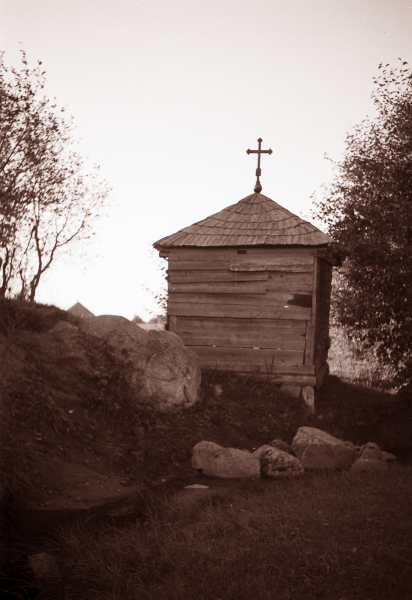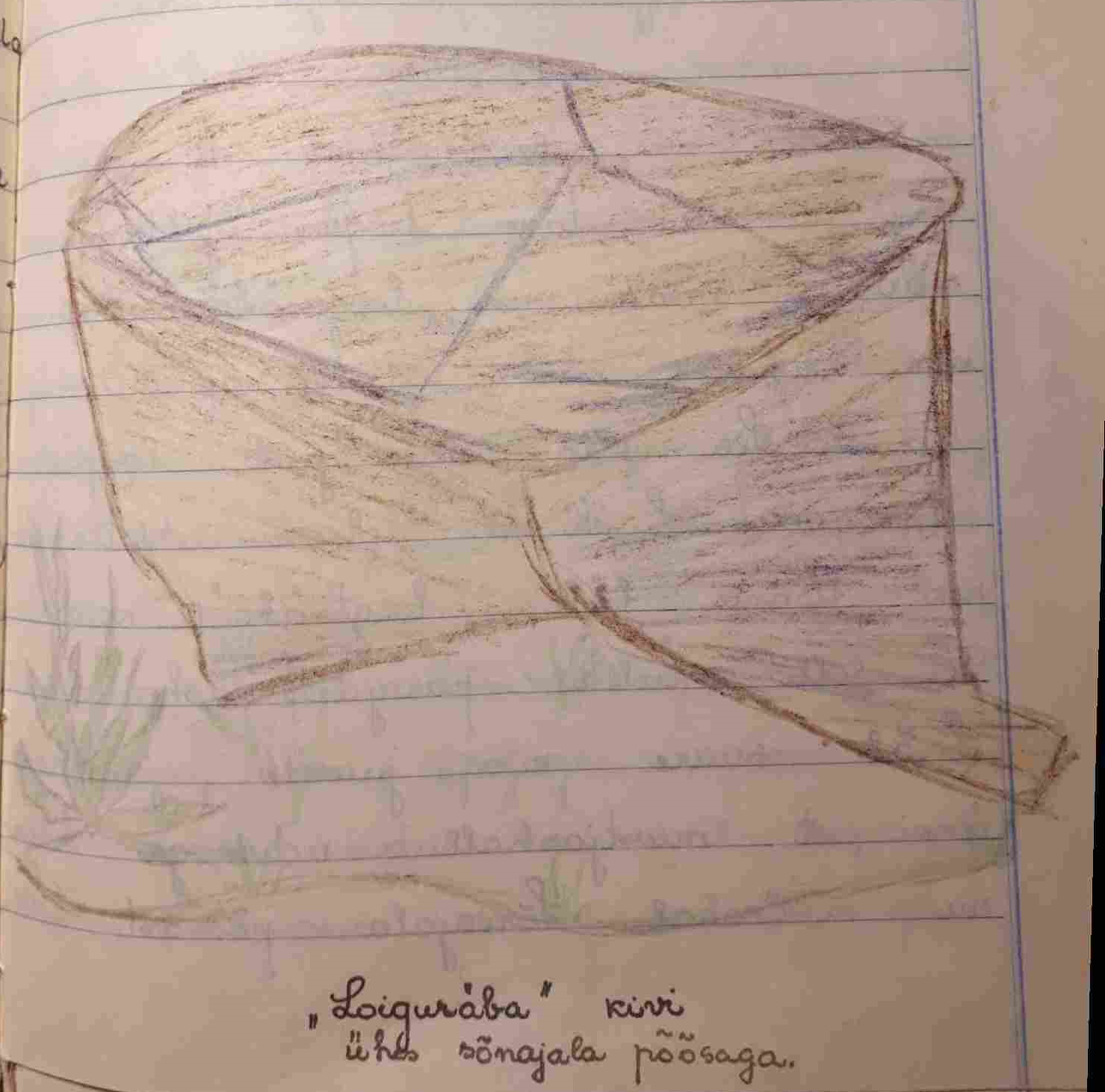Surface forms, stones, sand


In the old days there were two Ogres. One of them was on the Puka hills and the other on one of the hills of Otepää. They started playing, throwing stones for fun to each other for fun. One threw, and the other one had to catch the stone thrown into the air, as a ball is caught nowadays. Many stones were gathered from this throwing and later some of them sank into the earth.
Muiste olnud kaks Vanapaganat, üks Puka mägedel, teine ei tea missugusel Otepää mäel. Hakanud ajaviiteks teineteisega mängima, nimelt kiva kätte viskama. Teine pidanud visatud kivi ikka kinni püüdma, nagu meie päevil palli kinni püütakse. Sellest viskamisest tekkinud palju kiva. Pärast on osa neid kiva maa sisse vajunud.

About one kilometer from my place, there is a large and dense thicket with a number of small puddles, so-called Loiguräba – “Puddle Marsh”. This name comes from the fact that there are many small puddles there.
What is even more interesting is that there stands a wonderful big stone in this Puddle Marsh. ---
Once, a woman went to gather mushrooms in the forest with her small child. She went through the forests of the entire municipality, but did not find mushrooms anywhere.
She thought: "If I go to Loiguräba, maybe I'll find them there."
Done! So they go to Loiguräba. They get there and suddenly see a big grey nebula floating above the stone. There was a fern bush by the stone – a snake crawled out of it and snapped at the woman: “What are you doing here?”; and then it crawled back up the side of the stone and disappeared into the mist.
They were wondering what it could mean? After a few minutes, three men jumped out of the bush and asked the woman and the child: "What do you want to get from here?"
The woman with the child scampered from the stone as fast as they could go! They were running and running, for a long stretch, finally reaching the same stone above which the gray mist had already been floating. Again, the woman wondered what "hell" this meant. She stood for a while by the stone and was about to leave when a big black man jumped out from under the bush with a gun on his back, and he took the woman and the child to the top of the stone into the grey fog.
After that, all the fog disappeared from over the stone, but the woman and child were nowhere to be found.
The stone, however, stands together with the fern bush to this day.
Minu kodukohast umbes ühe kilomeetri kaugusel on suur ja tihe padrik hulga väikeste loikudega nn. Loiguräba. See nimetus on tulnud sellest, et temas on hulk väikesi loike.
Veel huvitavam on see, et selles Loiguräbas asub suur imeline kivi. ---
Kord läinud naine oma väikese lapsega metsa seenele. Ta käinud terve valla metsad läbi, aga kuskilt pole seeni leidnud.
Mõtelnud, et: "Kui läheksin õige Loiguräppa, vast sealt ehk leian."
Tehtud! Lähvad siis Loiguräppa. Jõuavad sinna ja näevad äkki suurt halli udukogu hõljumas kivi kohal. – Kivi juures oli üks sõnajalapõõsas. – Sõnajalapõõsast roomanud välja uss ja ütelnud naisele, et mis naine ja laps siit tahavad, ja roomanud siis (tagasi) ise kivi külgepidi üles ja kadunud udusse.
Ei tea, mis see küll võis tähendada! Saanud paar minutit mööda, kui põõsast karanud välja kolm mehikest ja küsinud naiselt ja lapselt: „Mis te siit tahate saada?“
Naine ühes lapsega „plaganud“ kivi juurest kus seda ja teist! Jooksnud, jooksnud tükk maad, viimaks jõudnud sinnasamasse kivi juurde, kus ennegi hõljunud hall udukogu kivi kohal üleval. Jälle naine mõtelnud, mis „põrgut“ see ometigi tähendab. Seisnud siis tükk aega kivi juures. Tahtnud parajasti minema minna, kui põõsa alt karanud välja suur must mees, püss seljas ja viinud siis naise ühes lapsega kivi otsa halli udukokku.
Pärast seda kadunud kõik udu kivi kohalt, aga naist-last ei leitud kusagilt.
Kivi aga seisab tänapäevani ühes sõnajalapõõsaga.

